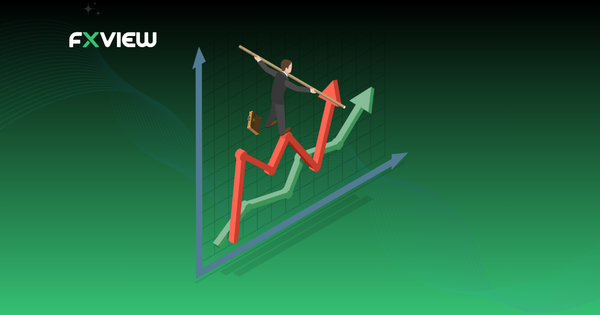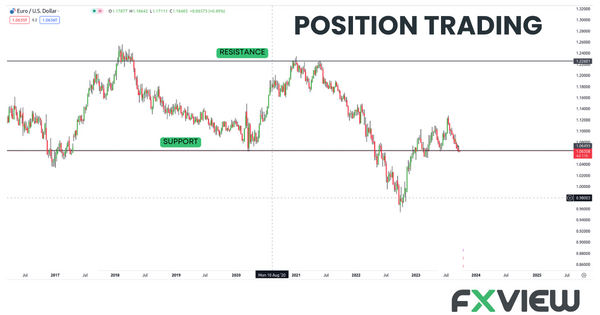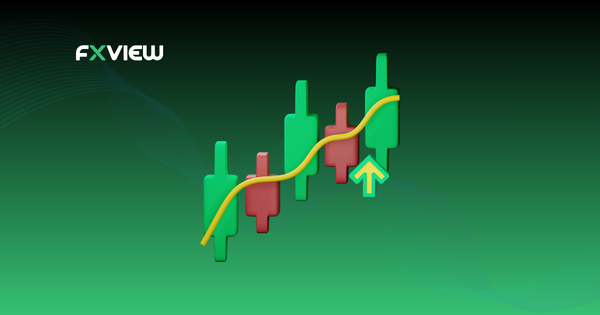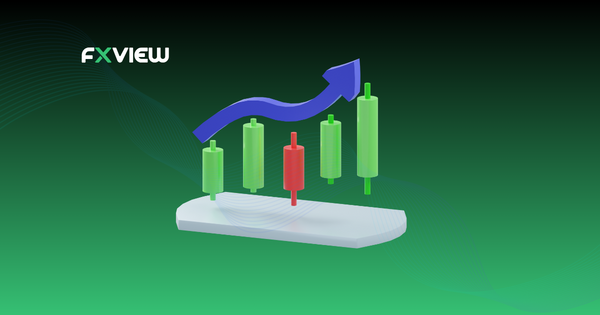
Position Trading: A Beginner’s Guide
Position trading is like the grandmaster chess player in the trading world- patient, strategic, and willing to wait for the perfect move. This trading method contrasts sharply with the fast-paced world of day trading, where positions are often opened and closed within a single day. Want to learn more about position trading? You are at the right place!

What is Position Trading?
Position trading is a method where traders keep their trades open for extended periods – weeks, months, or more – aiming to gain from overall market trends. Unlike day traders who scan the market for potential daily fluctuations, position traders look at the bigger picture. It’s not about possible quick wins; it’s about playing in the long run.
For example, consider position trading in forex. Forex position trading means that you’re not concerned about the minor fluctuations in currency pair prices that may happen every day. Instead, you’re observing the big-picture trends in the forex market, often linked to potential major economic shifts or geopolitical changes.
Features of a Position Trader
- Patience: Position traders are the embodiment of the saying, “Patience is a virtue”. They’re willing to stick to their positions through the market’s ups and downs.
- Big Picture Thinkers: They’re not influenced by daily market news; instead, they focus on potential long-term economic trends and data.
- Risk Management: Just because they’re holding long-term doesn’t mean they’re reckless as risk management is also very important and crucial.
Approaches to Position Trading
- Trend Following: One of the most common strategies. Position traders identify a strong market trend and buy into it, hoping to sell when the trend eventually reverses.
- Breakout Trading: When a security breaks above a resistance level or below a support level, it’s an indication that a large price movement might be about to happen. Position traders look for these breakouts and position themselves accordingly.
- Fundamental Analysis: Given the long-term nature of position trading, understanding the underlying value of an asset (through metrics like P/E ratios, financial statements, etc.) can potentially be beneficial.
- Techno-Fundamental Strategy: This strategy can help traders understand the broader macro and microeconomic factors that might affect their position in the long run while using technical analysis to determine the best entry and exit points.
- Technical Analysis: This is particularly useful in position trading when establishing stop-loss orders or determining when a long-term trend may be reversing.
Advantages of Position Trading
- Less Stressful: No need to constantly monitor the markets non-stop. However, you should always stay up to date and keep an eye on the markets and the major events that could occur and potentially affect your position.
- Fewer Transaction Costs: Since you’re placing fewer trades, you’ll likely avoid constant commission fees.
Disadvantages of Position Trading
- Capital Lockup: Your money can be tied up for extended periods, which could be used elsewhere.
- Potential for Short-Term Losses: The market might go against your position in the short run, which can be nerve-wracking or you might not be able to catch the major market trend as some events might occur unexpectedly.
Risks Involved in Position Trading
While position trading might be profitable, it’s not without risks. Economic downturns, geopolitical shifts, or significant market events (like the housing crash of 2008) can turn a profitable position into a loss. Therefore, like all trading strategies, it involves high risk of losing invested capital.
Position Trading vs. Intraday Trading
The main difference is Time. Intraday trading is all about speed, with traders capitalizing on potentially small price movements within a single day. Position trading, on the other hand, is the marathon to Intraday’s sprint.
Key Takeaways
- Position trading could be an option to be considered by long-term investors.
- By being patient and analyzing, you might be able to take advantage of important market trends.
- Remember there are risks, manage your money wisely, like with any trading strategy.
Conclusion
Position trading may prove to be a useful tool specially if combined with an understanding of fundamental analysis and macroeconomic factors.
Remember, it’s not about the short sprint but the long journey that may lead to exciting opportunities!
Disclaimer: The information contained in this article is provided for educational and informational purposes only and it is not intended to be, nor does it constitute financial, investment or trading advice. You should not make any financial, investment or trading decision based on the information provided in this article without performing your own research or seeking advice from an independent advisor.



